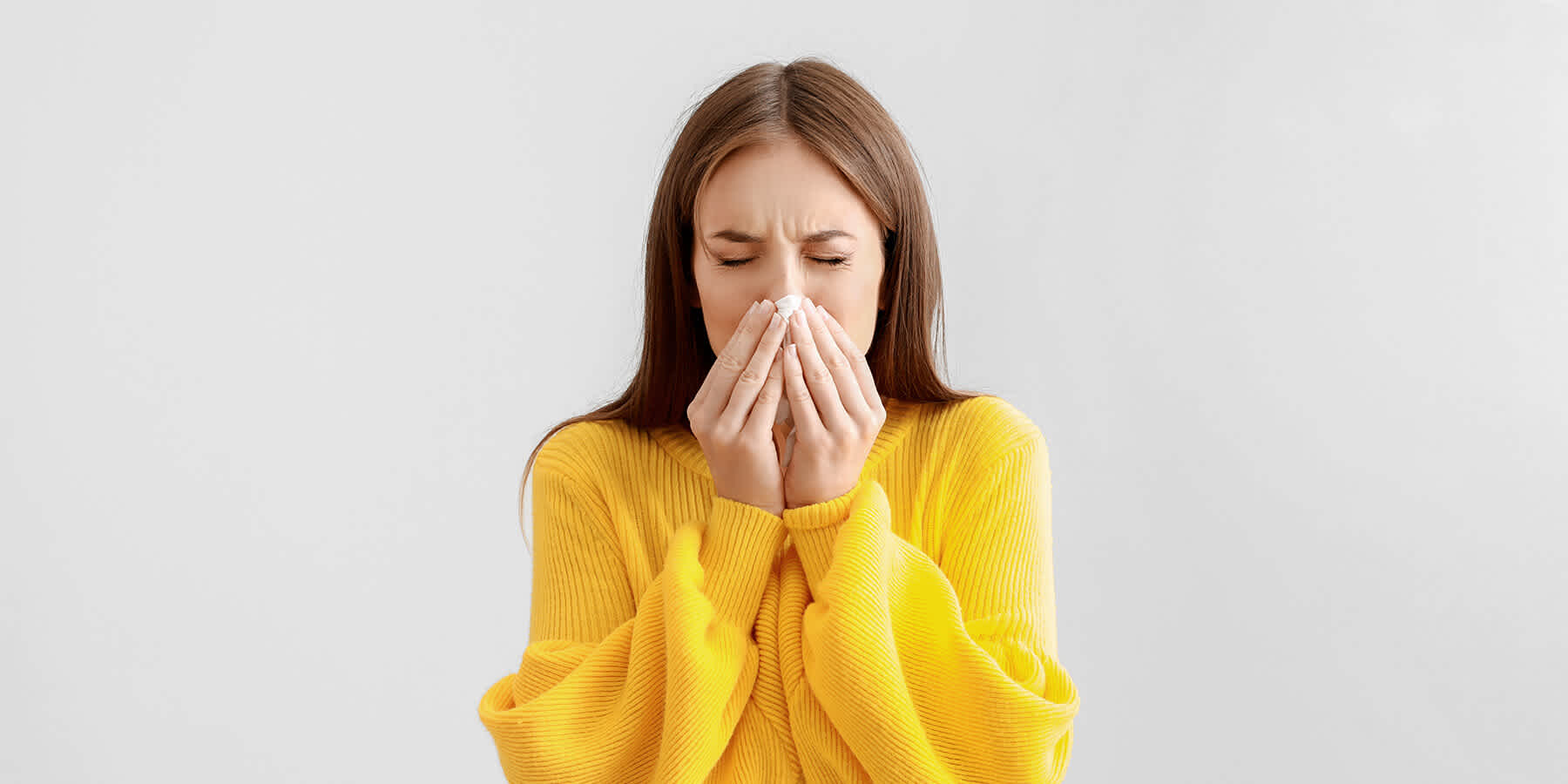
Think you have seasonal allergies? Here's a list of potential symptoms
Medically reviewed by Neka Miller, PhD on June 6, 2021. To give you technically accurate, evidence-based information, content published on the Everlywell blog is reviewed by credentialed professionals with expertise in medical and bioscience fields.
With warmer weather upon us, some people may find themselves sneezing or coughing more than usual. That can be alarming, especially since these signs may resemble COVID-19 symptoms, but they may simply reflect seasonal allergies.
Seasonal allergies, also known as hay fever or allergic rhinitis, are caused by your immune system’s overreaction to airborne molds and pollen from trees, flowers, grass, or weeds. Identifying the symptoms of seasonal allergies — and then checking in with an at-home allergy test — is the best first step to knowing if you need some extra help from antihistamine medication. If you believe that you’re an allergy sufferer, read more about seasonal allergy symptoms below.
Seasonal allergy symptoms
Millions of people suffer from seasonal allergies, but specific symptoms and their severity can vary from person to person. The most common symptoms for seasonal allergies include:
- Runny nose
- Post-nasal drip (which can sometimes contribute to a sore throat)
- A stuffy nose
- Pain or pressure in the sinuses
- Congestion
- Red, watery, puffy eyes
- Sneezing
- Coughing
- Itchy mouth, throat, nose, ears, or eyes
- Mild fatigue
This collection of primary symptoms can combine to make any allergy sufferer feel miserable and just generally unwell. It’s easy to develop a sort of mental fuzz that can reduce your concentration, decrease your ability to make decisions, impair your hand-eye coordination, and impair your memory. You may feel extra irritable, and the symptoms can potentially contribute to sleep disorders that can lead to further fatigue and other health issues.
Managing your symptoms
The best way to manage or reduce your seasonal or tree pollen allergy symptoms is to reduce your exposure to pollen and other allergens. Start by checking your local pollen forecast frequently. Stay inside on days when pollen and other allergens are at their highest. If you do have to venture outside, try to limit your activities outside of peak pollen times, usually in the midmorning and early evening. You should also:
- Stay inside on windy, dry days as pollen tends to be more plentiful and hang in the air for longer.
- Keep your windows closed in your car and at home. Avoid using window fans, which will only pull allergens into your home from outside.
- Avoid hanging your laundry outside to dry. Pollen can easily stick to damp towels and sheets.
- If you go outside, consider wearing a face mask or pollen mask to limit the amount of pollen that you actually breathe in.
Try to keep your indoor air as clean as possible. Air conditioning can keep your air from growing stagnant, and using HEPA filters can help to filter out pollen and other common allergens like pet dander. Clean your floors and carpets using a vacuum cleaner with a HEPA filter. While humidity is good outside for weighing down pollen, you want your indoor air to generally be dry. Mold and dust mites are the most common indoor allergens, and both of these thrive in humid environments.
Over-the-counter remedies
There are a wide range of over-the-counter medications that can ease symptoms and support your comfort.
Antihistamines
An antihistamine inhibits histamines, which are the cells released by the immune system that contribute to your allergic reactions. You can find a wide range of oral antihistamines at your local pharmacy, including fexofenadine, loratadine, and cetirizine. These are relatively effective in reducing mild to moderate symptoms, though some can come with side effects. Drowsiness is particularly common in older antihistamines. Talk to your doctor if you experience any severe side effects.
Decongestant
Decongestants can unplug that stuffy nose, reduce sinus pressure, and help you breathe easier. They come in oral forms, like pseudoephedrine, as well as nasal sprays. However, nasal sprays should be used minimally. Long-term use of nasal spray decongestants can actually backfire and worsen your allergies.
Combination medications
Some allergy medications combine antihistamines with decongestants, like loratadine-pseudoephedrine and fexofenadine-pseudoephedrine. This type of allergy medication can help with addressing a wider range of symptoms.
Saline nasal sprays
Unlike decongestant nasal sprays, saline nasal sprays can be used as often as you need. This nasal spray comprises a simple saline solution that can break down thick nasal mucus, reduce dry nasal passages, or otherwise remove pollen or other irritants from your nose.
If you believe you have seasonal allergies to tree pollen, ragweed pollen, or other more common spring allergies, the best way to know for sure is to take the Everlywell at-home allergen test. This simple kit tests for 40 different indoor and outdoor allergens. Once you have your results, you can talk to your doctor and determine the next steps to nip your allergy symptoms in the bud.
Related content
What does hypoallergenic mean?
Types of cats considered hypoallergenic
What dogs are considered hypoallergenic?
References
1. Hay fever. Mayo Clinic. URL. Accessed June 6, 2021.
2. Hay fever - Diagnosis & Treatment. URL. Accessed June 6, 2021.
3. Seasonal allergies: Nip them in the bud. Mayo Clinic. URL. Accessed June 6, 2021.
